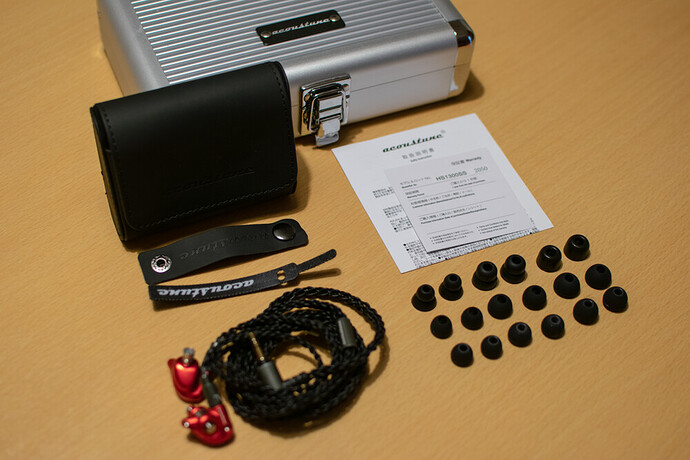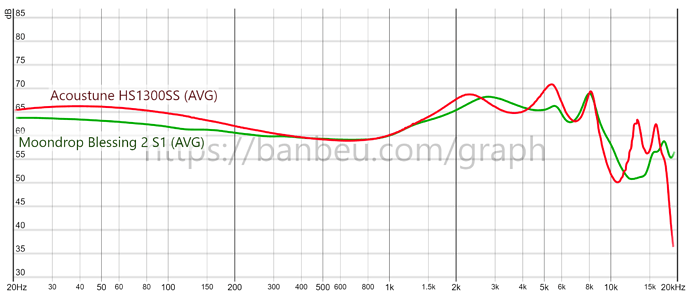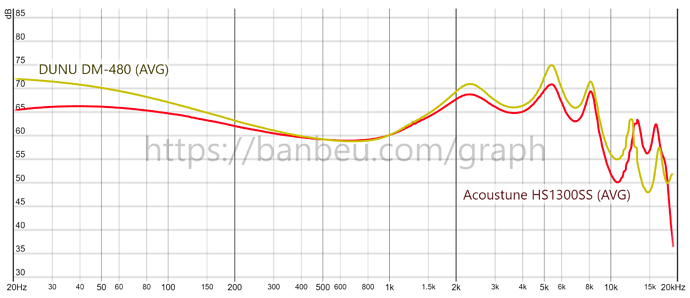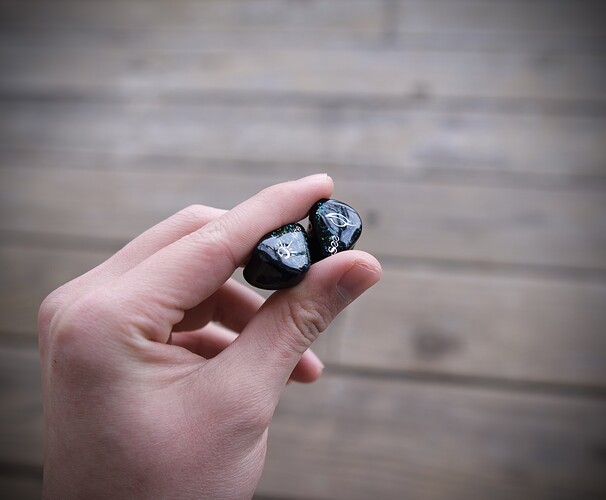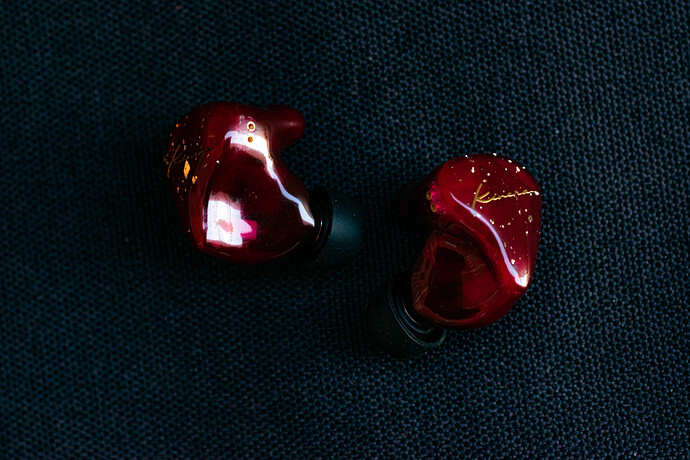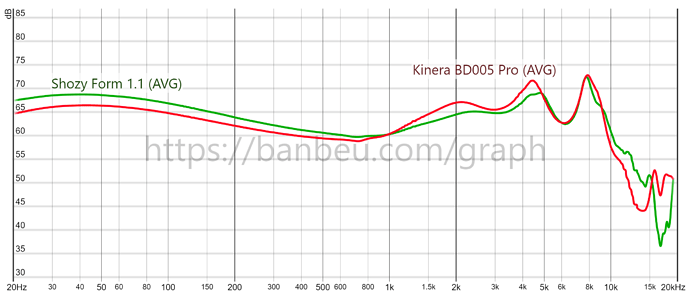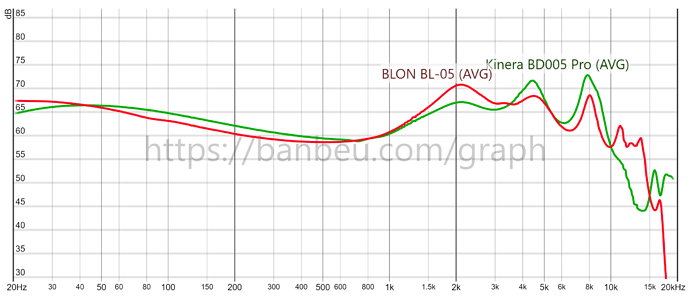I had the SA6 and felt the same way you did. A bit too “safe” in tuning. I have Dusk and Monarch and love both of them. I would say start with the Dusk since its amazing quality for price. The sub-bass is emphasized but only slightly so its not “boomy.”
Back with my Acoustune HS1300SS full review since I purchased it over 3 weeks ago. It has been quite a fun experience with the IEM. Not to mention I am steadily getting better at color grading my picture with my new camera but I digress.
Like usual, my review is a copy from with some editing to fit this site: Acoustune HS1300SS review: Correctly colored
One can also look at my disclaimer to know more about my approach to reviewing IEM: Review Disclaimer
Information:
- Driver: 1DD
- Price: 300$
- Purchase link: Acoustune アコースチューン HS1300SS 【2/10~3/31まで!新生活応援!Acoustune買い替えキャンペーン!】 Azul / e☆イヤホン
The Acoustune HS1300 SS was a self-purchased unit.
Build and Accessories:
- 3 pairs of Acoustune AET07 tips (S/M/L)
- 3 pairs of Acoustune AET08 tips (S/M/L)
- 2 pairs of Acoustune AET06 tips (S/M)
- 1 pair of Acoustune AET02 foam tips
- Warranty card/Instruction paper
- 2 cable tighteners
- 1 Soft case
- 1 IEM briefcase
- Unbalanced 3.5mm cable with proprietary PentaconnEar connection
- The IEM itself
One thing I can’t guarantee with the HS1300SS packaging is the briefcase since when I bought this at e-earphone, the staff included it with the IEM box. And, I am not sure if this would apply to other stores outside of Japan or not.
Regardless, I find myself satisfied with the HS1300 accessories. The soft-case is ok: it’s nice to hold but I feel like the lid is too flexible, if it is a little bit harder then it would be nicer to use. The cable has some rubbery texture which isn’t something that I prefer. Though, I really like Acoustune proprietary connection here, it’s easy to apply the cable to the IEM as well as taking it out, the connections are tight which leave me with no problem in using it. That said, this would hinder a lot in terms of finding replacement cables since it is not following the usual standard like MMCX or 2-pin which is plenty in the market nowadays.
That said, the Acoustune HS1300SS features a unique design with a stainless steel frame and cylinder chamber inside. It’s a weird design where weird edges are sticking, posing concern in terms of comfort. Since my ear canal is short and my pinna is flat, I don’t have trouble fitting it. But, when I asked my friend (who has bigger ears) to try it, he said one of the edges of the HS1300 touched his ear, causing discomfort after 30 - 45 minutes of wearing.
Others who happen to buy the IEM around the time I got it reported that they are fine with the fit (with one claiming it is one of the most comfortable IEM they have tried). So it boils down to how sensitive your ears are and the shape of them.
Caveat emptor if you are planning to buy the HS1300SS, I highly recommend you to make sure that you are comfortable with the fit before buying.
Sound:
Tonality:
The Acoustune HS1300 SS has a “Warm V-Shaped” signature which is evident by the bass/midrange boost and the upper-mid + treble focus.
While the IEM might not be the most balanced thing in the world, I have to admit that it is one of the cases where I consider the coloration that is going on within this IEM helps a lot on its sound presentation: it’s warm, one can even call it pleasant, yet has a lot of energy when the song calls for it.
Scanning through the frequency response and you can see some possible explanations:
- The pinna raise at ~2.2kHz
- The ~5dB peak at ~5kHz
These push a lot of instruments forward, maybe too into your face for some people who prefer a relaxed listening. That said, instruments like electronic guitars greatly benefit from this type of tuning - lots of energy and bite, which makes the HS1300 an ideal partner for Rock, Metal…
On top of it, the HS1300 also has decent upper-treble boost which results in an airy presentation in a lot of track that I throw it into. This would be what I considered as a pro in this IEM if not for one thing: The 13kHz peak.
Yes, I know that I that graphs over 10kHz are not to be trusted hence I have to use sine sweep to confirm this on my own. This results in a sound presentation that is slightly zingy when it comes to instruments like cymbals and acoustic guitars… Some vocal recordings do show this too, for example, Mameko’s vocal in Mamyukka - 深海図鑑 or Aitsuki Nakuru’s in AcuticNotes - Sherras…
That said, I am not someone who particularly too sensitive about it unless it is something like the Tin Hifi P1 (and P2), not to mention you would only pick this up in some “badly mastered” recordings anyway. What irks me more in terms of vocals presentation is that it can often come out as slightly shouty and nasally to my ears. Hence, it won’t be my utmost pick when it comes to J-Pop (or K-Pop) when it comes to recommendation unless you can forgo this issue.
Technical performance:
While it won’t be the top performer in the price bracket that it belongs to. The HS1300 is still quite competitive. Most notable to me is the lower midrange, where the IEM managed to provide good transient and detailing. The bass is decent too, a bit bloat to my ear but overall providing good slam and texture.
That aside, what tanks this IEM down is in its average imaging and soundstage. Instrument layering on the HS1300 lacks some depth, the soundstage is still contained rather than having an “over the ear” sensation. Not only that, there are also some sense of the notes smearing into each other which hinders its resolution by a bit.
Though, it’s definitely better than a lot of IEM I have listened in this regard. And not really a surprise regarding imaging/soundstage since not a lot of IEMs can achieve this anyway.
Choice comparisons:
vs Moondrop Blessing 2:
Some people might feel this comparison unfair considering Moondrop Blessing 2’s reputation in its sound performance but I reckon a lot of my readers will have this IEM (or at least heard about it a lot) so it’s a good reference point.
That said, no sugar coating here, the Blessing 2 trumps the HS1300 in any way imaginable in terms of technical performances. Wider soundstage and better in terms of instrumental position accuracy. Detail retrievals is even out of the question.
Were if there is anything that giving the HS1300SS the edge over. It would be its colored presentation that can be appealing to some people. Not only that, it has better bass performance - more quantity and better texturing. HS1300SS also has thicker notes, which can be one of the factors that you would consider over the Blessing 2.
vs DUNU DK-3001 Pro:
With the Moondrop Blessing 2 as the benchmark for my recommendation in this price range, the DUNU DK-3001 Pro usually served as one of my alternate recommendations were if one doesn’t like Blessing 2’s tonal performance.
Hence, I put these on comparison because I feel HS1300 deserves the same spot as the DK-3001 Pro.
Comparison wise, DK-3001 Pro flash out trumps HS1300 on bass transient, a little bit better in terms of detail retrievals and on top of it all, is a more balanced tuning. Yet, the HS1300 is more colored, airier and has more bass quantity - it is more engaging to listen to.
And then when I think about the similarities: The sharp lower-treble, average imaging… Then the HS1300 sounds like the opposite side of the same coin with the DK-3001 Pro - it fills in what the DK-3001 doesn’t have with some small sacrifice in resolutions.
Of course, in terms of pricing, one could say that the HS1300 will be better for your wallet and I would not argue. Though, if I were to have a ranking page like a lot of people have nowadays, I would put the HS1300 at the same spot as the DK-3001 for these reasons.
vs DUNU DM-480:
This comparison serves as an upgrade recommendation rather than just the usual “comparing which is better in the same price bracket”.
It’s not hard to understand the reason why if you are familiar with graphs. While both have similar tuning style, the HS1300SS is more balanced than the DM-480 by having less aggressive mid and less bass quantity - resulting in less bloat.
That said, what is on the graph isn’t always reflected when it comes to subjective impression, so, what about it? Resolution wise, the HS1300’s note decay is more natural, better detail retrieval, airier, soundstage is more open than the DM-480…
Overall, just better sound quality which is not a surprise considering the price difference. But still, the reason why I dubbed this as “upgrade recommendation” comes from the tuning style of both which are similar to each other: throwing any instruments that I am familiar with from the DM-480 to the HS1300, then I will find the latter presenting it similarly, albeit with some improvements.
Conclusion:
All in all, the Acoustune HS1300SS is not something that one would find it amazing in this price bracket like the Moondrop Blessing 2, nor it is a “jack of all trade, master of none” due to its colored signature. But, it has decent technical technicalities to back it up and a tuning that not just doesn’t break the bank, but also has some of its own twists without going too far.
Hence, I will give it my recommendation. Quite an unique IEM.
Great review @Banbeucmas.
Thanks, I quite like the design of Acoustune. Though one problem I see with some of my US friend is that they don’t know how to get the IEM. With us Asian, it is fairly easy.
Not sure if there is anyone here are experienced in Acoustune that are based in the US.
Accessibility to a lot of the iem’s in the Eastern Economy is often very difficult for westerners. Language barrier for a start. I’m sure it’ll improve over time.
Yeah, hopefully so. I do have some struggle getting Western IEM to review on the other hand. :'D
Nice review and well detailed!
The build of the IEMs reminds me of something usually found in a performance engine 
Acoustune is sold by AccessoryJack, based out of Hong Kong and english speaking. Makes it a little easier for us. In-Ear Monitor – Tagged "Acoustune"– AccessoryJack
I really do want to try one of their IEMs sometime. A few of them are really well liked.
SeeAudio Yume Review - Yume Want To Hear This
Review written by Precogvision
Introduction
SeeAudio is the latest brand to hit the crowded Chi-Fi scene; having purportedly made waves on the domestic market, they’re now expanding into the international market. The Yume (short for the word “dream” in Japanese) is their entry model, a 1DD/2BA hybrid that clocks in at $169. I probably don’t need to tell you that this is one of the most, if not the most competitive price brackets amongst IEMs. Luckily, SeeAudio’s sporting a certain advantage: They’ve got the experience of one of Chi-Fi’s most renowned brands, QDC, backing them up. But does the rookie brand’s entry model actually have what it takes to make its mark, to fulfill the dreams of listeners anxious to get their hands on this IEM? Let’s take a look.
This unit was kindly provided by Linsoul for review. You can purchase the Yume from here. As usual, what follows are my honest thoughts and opinions to the best of my ability.
Source & Drivability
All critical listening was done off of an iBasso DX160 and A&K SP1000M with lossless FLAC files, the stock cable, and the stock tips. I neither experienced any hissing, nor did I have any trouble driving the Yume off of any of my sources.
The Tangibles
So, ah, what’s the best way of putting this? SeeAudio’s not pulling the punches here, and they have a very clear target demographic in mind for their IEMs. The Yume arrives in an anime-art style box with their mascot character in front. On the back, you have the specifications and a graphic depicting the frequency response of the Yume. I’ve noted this before, but I think it’s awesome that more manufacturers are beginning to include this stuff in the interest of transparency. You can knock the waifu; you can’t knock that. Included inside are the following accessories:
- Assortment of eartips
- Plastic, hockey puck case
- 0.78mm 2-pin, 3.5mm cable
- Anime waifu stickers
I’m not going to lie, some of the marketing is pushing it even for me, a self-proclaimed anime aficionado; case-in-point the logo on the hockey puck case. I do like the case itself, though, which uses a friction seal. While it doesn’t seem super high-quality, it’s lightweight and should provide sufficient protection for the IEM. The cable of the Yume is certainly usable, and I don’t have any complaints on this front.
The Yume itself sports an acrylic shell with a mix of green and purple glitter for the faceplate. There are silver-colored inlays with the brand’s logo; you can see the QDC roots here, as the placement of the “See” text is reminiscent of where QDC inlays their own brand name. The Yume’s ergonomics are stellar, and it’s on the smaller side, so I had no issues with fit or comfort - as usual, fit is subjective, and your mileage might vary and all that. Overall, the Yume’s build is a classy, attractive ordeal.
Sound Analysis
Frequency response measured off of an IEC-711 coupler. There is a resonance peak at 8kHz; as such, measurements after this point should not be considered entirely accurate. It’s worth noting that the coupler itself is also only certified up until around 10kHz.
Normally, I’d break down each part of the frequency response in depth, but let’s eschew that trend here. I think it makes more sense to approach the Yume from a more abstract perspective, to capture its sonic qualities in their entirety.
Supposedly the Yume adheres to the “Harman@2020” target. Aside from this target technically not existing last I checked, someone also recently pointed out to me that most reviewers would say the same of most all Harman-tuned IEMs: “A healthy sub-bass boost (but no mid-bass bleed!), the upper-midrange is a tad forward but with a nice pinna compensation, and maybe it just needs a bit more treble extension”. I got a laugh out of that because, well, it’s mostly true. But there are small deviations here and there. The Yume is less sub-bass oriented, slopes off cleaner in the upper-midrange, and there appears to be a minor peak at around 8kHz in the mid-treble. All of this culminates in a slightly leaner, more reference-oriented presentation that’s just as much easier on the ears. The Yume’s tonal balance is, to put it lightly, class-leading.
And I do want to highlight the midrange tuning - the heart and soul of the music - here. The Yume sports a nigh-identical midrange to the Moondrop B2: Dusk, and I can’t attest enough to how well this aspect of the tuning has been done. While it’s still upper-midrange oriented, slightly lean in note-weight and prioritizing crunch, it’s sloping off of 3kHz wonderfully without resulting in the characteristic edginess that most Harman tunings exhibit. It hits closer to how I perceive neutral than anything else I’ve heard; while nothing particularly shines or stands out, that’s not what the Yume’s tuning is going for. The extra treble energy also pays compliment to the “crunch” in the lower-midrange; simultaneously, addressing the oft-cited lack of treble energy in Harman-tuned IEMs.
I think it’s equally true, then, that good sound is good irrespective of how it’s been inspired. And here, we come back to my “to put it lightly” sentiment. The Yume’s not just class-leading for its tonal balance. No, no, no. It punches well-beyond the realms of “for $200,” and competes more closely with a lot of kilobuck stuff on the basis of tonality. It’s really just that pleasing.
Technical Performance
Now, I know that’s a bold claim. But a stellar tuning does not necessarily qualify a stellar IEM; here, I recall some fellow reviewers’ sentiments about the Yume sounding somewhat “mushy” despite its excellent tonality. This is where I’d like to tell you that they’re blatantly wrong, and that the Yume is a highly-proficient, technical IEM for $200. Except I can’t. Transient attack is fuzzy, largely undefined; to my ears, the Yume seems to congest quite easily relative to even the likes of the Moondrop Starfield. It stands that layering takes a hit and imaging is decidedly 2-dimensional, constrained to the width plane. I’d put overall technical performance somewhere between the level of the Blon BL03 and the aforementioned Starfield, skewed toward the former.
There also appears to be a certain grittiness to the midrange’s transient behavior; it’s walking the line between note texture and grain. Fun fact, the Yume uses the same BA driver used in the Etymotic ER4XR which I don’t recall presenting this quality as closely. This inclines me to say it’s largely the product of more egregious decay. To a certain degree, I think it works well with stuff in the lower-midrange, even matching the slightly scratchy treble, but on more soprano-oriented stuff, I find it somewhat unnatural. Your mileage might vary and all that, I just thought it was interesting.
Something I definitely think needs work, though, is the Yume’s bass. Sure, it’s clean, but it’s lacking in slam to the extent of which it feels like I’m being punched halfheartedly behind a training bag. And regardless of how it graphs, if you ask me, it’s strangely lacking in subbass. Perhaps it’s the way it slopes; the Yume fails to dig into the deepest of octaves or present adequate rumble. Ultimately, I’m in the business of telling you what you need to know, not what you want to hear: The Yume does not punch beyond its price in the technical department at all.
Select Comparisons
The way I see it, the Yume only has a few, real competitors: the Etymotic ER2XR, the Moondrop Starfield, and the Thieaudio Legacy 4. Sure, you’ve got stuff like the Fiio FH3 and the Thieaudio Legacy 3 which might be more apt comparisons (you know, because they’re 1DD/2BA and all), but honestly, I don’t find either of those IEMs particularly competitive.
Despite being down two extra BA drivers, the ER2XR has a pretty significant edge over the Yume when it comes to technical performance. Transient attack is tighter, and some semblance of soundstage depth is actually present despite imaging being the off-cited weak point of the Etymotic monitors. You also have all the inherent coherency and timbre benefits of a single DD.
Why even go for the Yume, then? The answer is simple: comfort. The Yume’s tonality is more pleasing, particularly in the ear compensation which some might find overly forward on the ER2XR. And then physically, of course, you’ll have to deal with the infamous Etymotic triple-flange tips and fit memes.
It’s a tight battle with the Starfield. The Starfield is a good deal bassier, less clean, but it makes up for it by, again, having a technical edge over the Yume. Midrange-wise, I give the edge to the Yume - at least in terms of tuning competency - as the Starfield exhibits a slight peak at around 4kHz which some might find overly bright. This does impart a sense of clarity over the Yume. By contrast, as opposed to the slightly scratchy treble on the Yume, the treble on the Starfield is somewhat hazy thanks to a 12kHz peak.
If you want a more “organic,” smooth presentation, I’d look at the Starfield. On the other hand, if you prioritize a more neutral midrange, less bass, and a tad more treble energy, I’d gravitate towards the Yume.
Here’s another new kid on the block. The Legacy 4 takes on more of a mild V-shape tuning with the upper-midrange and lower-treble emphasized. You can expect the Legacy 4 to be a good deal brighter, more in-your-face with its presentation, lending to a strong technical showing. The Legacy 4 also hits my preferences more closely in the bass with better tactility and slam. The only problem? Listening to the Legacy 4 can be a fatiguing affair, and here, the tonal balance of the Yume really shines through as much preferable for extended listening.
The Verdict
There is no question in my mind that the Yume has lowered the bar of entry for which one might expect not just good, but even stellar tuning. Like so, if one desires the most well-tuned IEM under $200, then I say look no further than the Yume. You will, however, notice a recurring theme in the brief comparisons I made: The Yume’s intangibles are lacking relative to other heavy-hitters in its price bracket. If SeeAudio could reify the Yume’s technical performance a step further, I believe the Yume would be set to take the $200 benchmark position. For now, the rookie brand has demonstrated a gift for tuning, and I excitedly await what SeeAudio decides to release next. Recommended.
Reference Tracks
- Aimer - Hakuchuumu
- David Nail - Let It Rain
- Dreamcatcher - Silent Night
- Girls’ Generation - Galaxy Supernova
- Illenium - Broken Ones
- Joe Nichols - Sunny and 75
- Keith Urban - Defying Gravity (2009)
- Sabai - Million Days
- Sawano Hiroyuki - Best of Vocal Works Remastered (2020)
- Taeyeon - My Voice (2017)
- Tiffany - I Just Wanna Dance
- Tom Day - Where Were We
Great review @Precogvision. Another enjoyable read!
Very informative review @Precogvision.
I recently bought a set of Audeze iSine LX’s per their Valentine’s Day special. [They sold out shortly after I got mine. I’m not sure if this was actually a close out sale in disguise.]
Initial Impressions
Burn in: They sounded distorted, dithery, and wonky at first – sort of like a rotating room fan placed too close to a wall and blowing curtains around. The midrange was twisted and uncomfortable with vocals. So, I let them play for about 24 hours and tried again. They were much better on the second day.
Fitment: They come with ear hooks in the box and slick silicone tips installed. After struggling with the (fragile feeling) hooks, I decided to remove them and add my own foam tips (New Bee - large). This allows the iSine LX to rest in the outer ear without any hooks, and it is reasonably comfortable for such a large device.
Tone: In contrast with most headphones and IEMs that I own, out of the box these sound dead, hollow, flat, and lifeless. So, I put them on the THX AAA 789 to maximize their technical performance and routed them through a Schiit Loki EQ. They come to life and approximate my version of “neutrality” with the middle range (2nd and 3rd knobs) boosted. I used to own the Audeze LCD-2 Classic (open), which also had a dead spot in the mid-high range. Does Audeze have similar driver issues with all of their lower end products?
Summary: With EQ the Audeze iSine LX is a decent product. They successfully shrink planar technology to in-ear size, and retain the open-air feel of headphones. I see myself using them as one in-ear alternative in the future. But, they look absolutely ridiculous. At least mine are dark…
EQ is why the Cipher cable is so good with the Audeze iSine’s and my LCDi3. If you use ROON, there will be EQ settings for the iSINE 10, iSINE 20 and the LCDi4. This should be without a Cipher cable. The LX’s probably are similar to the iSINE 10 setting. It seems that Audeze is well away of the need for EQ of some sort with these.
Hadn’t thought of running them through my Loki, that was a good idea. I have the 20s, and liked them so much I got the LCDi3. These LX’s were out of stock, I was thinking of getting them for my wife to use with her iPhone 11, but she’s just not an IEM girl. She’ll play music through the iPhone speakers!!!
Or use Airplay to a Sonos, sometimes.
Cipher cable…sigh… I paid $59 for the iSine LX and the only Cipher cables I find now are $99 Bluetooth cables. So…probably won’t go down that path. Too soon to say. Audeze painted themselves into a corner, as it appears impossible to sell an inexpensive version (no Cipher cable) with good sound quality. Average buyers may balk at both the look and the tone.
Review of Empire Ears ESR (Empire Studio Reference) MKII.
Take a look here:
I ended up grabbing the original Blessing 2 and am really liking it. It sounds like we might have similar tastes - Thanks for the recommendations!
Thanks for this. Been looking around for more feedback on the Yume and this is a great review to help me along with my decision since I’m very intrigued by it!
Time to clear the backlog. I got the Kinera BD005 Pro the beginning of this month, though only now that I got the time to evaluate it. Here it goes.
This review is a copy-paste from my website with some editing: Kinera BD005 Pro review: Relax taking to the "next" level
You can also see my disclaimer to know about my methodology: Review Disclaimer
Information:
- Driver: 1DD + 1BA
- Price: 50$
- Purchase link: Kinera BD005 Pro 3D Printed Hybrid In-Ear Earphone — HiFiGo
The Kinera BD005 Pro was kindly provided by HifiGo in exchange for my honest review
Build and Accessories:
- Instruction paper
- 3 pairs of IEM tips (S/M/L)
- Unbalanced 3.5mm 2-pin cable (with mic included)
- IEM case
- The IEM itself
Nothing much to say here since most of the packaging is somewhat generic. The case is one of the more generic types that you can find online with the branding “Kinera” and motto etched on the cover. The cable is a 4 cored copper cable with an L-shaped plug. Both the Y-splitter and the 2 pin connectors are enclosed with metal. At least in the model that I am having here, the cable also supplies with a small controller and microphone for telephoning. It was nicely braided and doesn’t get tangled or microphonic much during my usage.
Kinera BD005 Pro shell design has a 3D resin shell with a pesudo-custom fit, there are three variations of the shells which you can choose (Red/Blue/Grey). Decorations like the golden particle with the brand name “Kinera” printed on the backplate remained the same with all variations. The BD005 Pro has fairly short nozzle which explains the eartips shape.
Regardless, this is a small IEM comparing to others similar shaped IEM on the market. The BD005 Pro provides a comfortable fit for someone having small ear like me and has good isolation.
Sound:
All of the data regarding frequency responses can be found on my database here
The Kinera BD005 Pro follows a mild V-Shaped signature leaning towards the warmer side. In my first listening impression with the IEM, I don’t think it’s outright bad, but the more I listen, the more problems I managed to pick out this IEM and some of them would be the reason why I would make the BD005 Pro a less preferable option on my recommendation list regarding its tonal performance.
The problems:
“Muted” is the first word that comes into my mind when I listened to this IEM. The treble response on this IEM is underwhelming . The roll off occurs too soon, giving percussions like cymbals having a tone that is dark and unenergetic. Hits are soft and the instruments noticeably lack presence when it comes to busier tracks. Niches genres like Speedcore is a hard victim of this too, for example in tracks like ///Under Construxion/// from Camellia where the entire song sounds deadly suppressed in the upper range.
A smaller problem regarding the BD005 Pro tonality that I have is the midrange. The ~8dB raise to 2kHz isn’t too bad: female vocals as a result are slightly forward which works in terms of my personal preference. But its presentation keeps remind me of how a telephone would sound, noticeably with vocalists like Mitsuki Nakae in tracks like ABSOLUTE CASTAWAY - 金平糖レトロチカ-ノクトメモリア-. Though, this likely to be a combination of the upper midrange, the lack of upper harmonic presences and, most importantly (imo): timbre .
Not mentioning the coherency, the BD005 Pro face the common plasticky BA timbre issue that a lot of hybrid/BA model around this price range have: the whole midrange is coated with a grainy, hazy sensation which somewhat reminds me of the ThieAudio Legacy 3 . Another thing to note that 005 Pro has a smoothed-out feeling in terms of transient, hence while it would work for someone going for a relaxed listening, it’s not something I would recommend for technical listeners.
The merits:
What’s great (or at least, decent) about the BD005 Pro is actually in its bass response. Of course, were if this is me I would hope for more focus towards the sub region to rule out some of the bloats that it has. But, the BD005 Pro actually have decent bass texture and tactility to back. So those problems aren’t really serious by the end of the day.
And to my surprise, the soundstage/imaging performance of the BD005 Pro is competent for the price that it is being offered. There is some sense of spaciousness in the recordings: stage has decent depth and height. Instrument layering is adequate - there are some smearing comparing the grand scheme of things for sure, but for this level of pricing, it’s on the upper echelon.
Choice Comparisons:
vs Shozy Form 1.1:
At first glance from the comparison graph, one would think that the BD005 Pro and the Shozy Form 1.1 have similar presentations in term of sound and I would partly agree with that observation. Minus some small oddities in the frequency range, both IEM are geared towards a relaxed listening but personally, the Form 1.1 can be regarded as a step up from the BD005 Pro for good reasons.
Of course, I am not saying that the BD005 Pro doesn’t have any leverage here: it has better soundstage and imaging than the Form 1.1, the bass is more controlled with better transient and not to mention that the Form 1.1 have a peak somewhere over 7kHz which can be sensitive for some ears.
But, even from a perspective of a relaxed listener which seems to be the target of both of these IEM, I cannot help but think that the Form 1.1 would be a better pick here. In terms of the damage from the flaws, the Form 1.1 doesn’t seem to be affected that severely comparing to the BD005 Pro. Over than that, the 25$ difference in my opinion isn’t that big and in exchange, you would have an IEM that has a richer tone, better timbral, arguably better resolution and, a treble response that is not dead.
You get the gist of it: this is mostly a one sided win geared towards the Shozy Form 1.1. So unless you cannot afford the price difference, I would recommend getting the latter all the way if possible.
vs BLON BL-05:
Here is a fairer comparison, BD005 Pro vs BLON BL-05. Let’s start with my quick summarization of the BL-05 since I haven’t got the chance to talk about it yet: Spacious, yet shouty.
Ok, that was a bit of an exaggeration on the former part; the BL-05 isn’t the most spacious thing I have ever tried, but definitely above average when it comes to music separation and staging.
But yeah, that is how I felt with the BL-05, the shoutiness of the IEM was the main reason why I am not confident in recommending it, were if it was the BL-05S from the beginning, I would put it on my green list.
Anyway, back to the main topic. Both the BD005 Pro and the BL-05 share similarities in terms of staging, with the BL-05 do have its coherency to leverage with the BD005 Pro’s detailing ability (yes, it’s a little bit better). You can also somewhat argue that the BD005 Pro has better tonality due to its “relaxed” sound and vice versa where the BL-05 provides a better treble extension. But, I see it as a toss up between the two since both do have the same level of “destruction” in terms of the flaws that they have, just with different reasons.
By recommendation, I won’t outright say the two are bad, but to be honest, I am not fully confident in recommending both either.
Conclusion:
Overall, what I can say about the Kinera BD005 Pro is that it is an “OK” IEM that does have some quirks to compete in the market. But, there are too many problems with this product that I find it hard to recommend it confidently. Still, not a bad IEM and if you are looking for relaxed IEM, you can still give it a shot.
Kinera make some of the best looking IEM’s, have they ever made a good sounding one  for
for 

Usually I find it more tolerable if the pricing was lower. The Kinera Tyr for example was quite decent imo.

